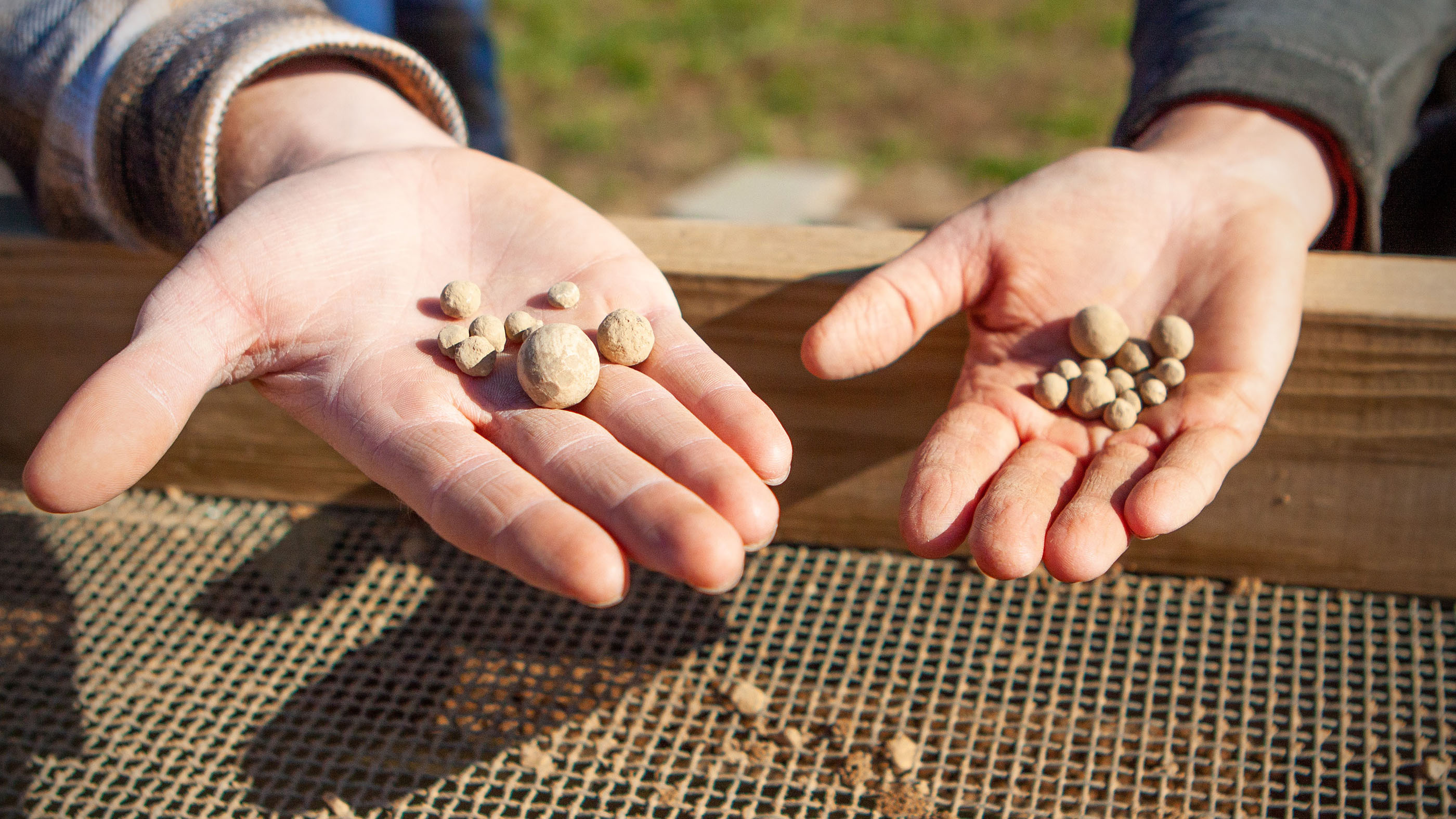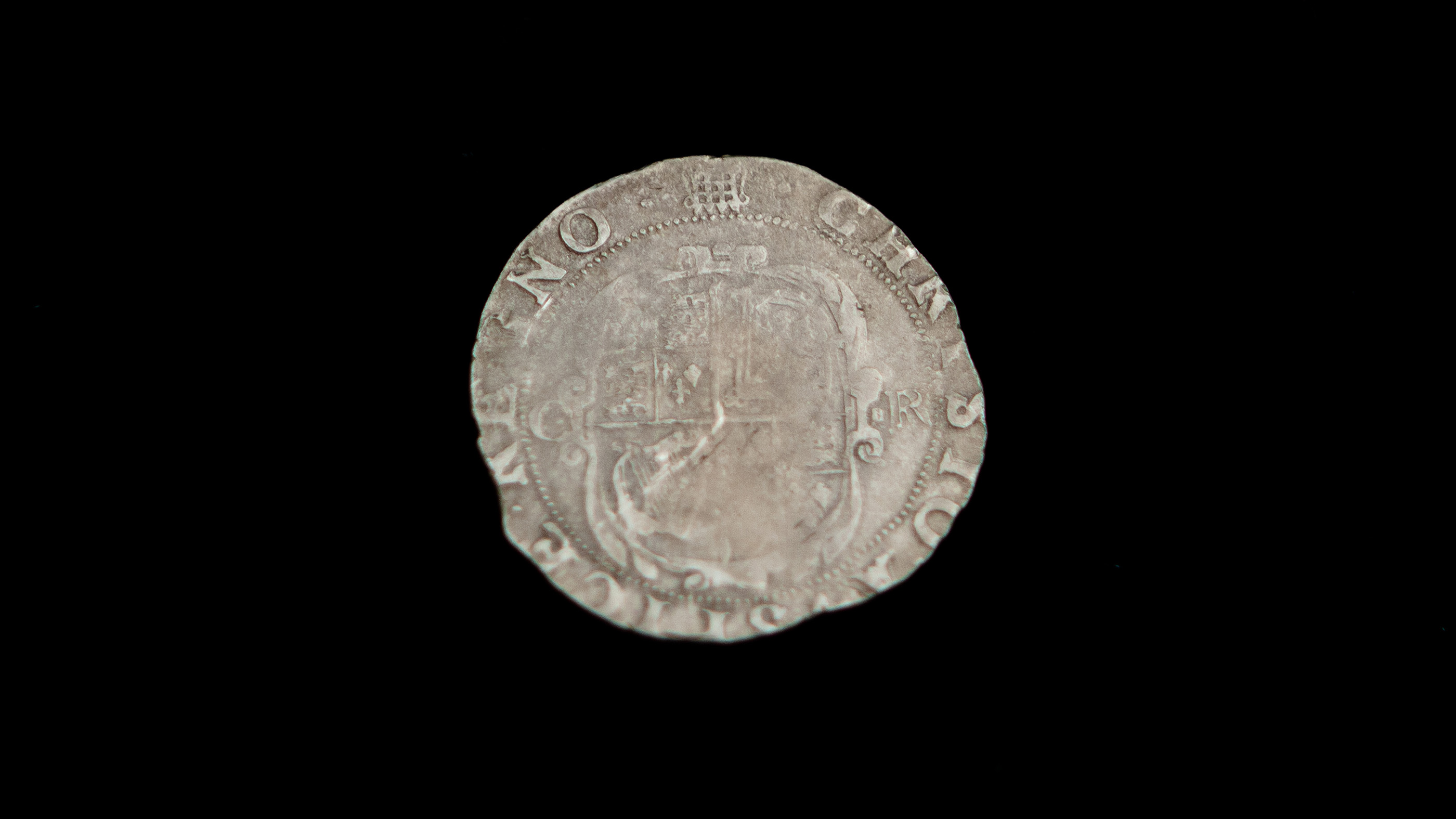Rare silver coin portraying King Charles I discovered in a field in Maryland

An almost 400-year-old silver coin found in a field in Maryland suggests that the remains of a nearby fort are all that's left of one of the earliest English colonial settlements in the Americas, archaeologists said.
The coin is a silver shilling — worth the equivalent of maybe $8 in the 17th century — that portrays a likeness of the English king Charles I. Research shows it must have been minted in London in about 1633 — more than a decade before Charles was executed by his Parliamentarian enemies in 1649, during the English Civil War.
Related: Family ties: 8 truly dysfunctional royal families
The coin indicates the underground remains of the structure where it was found are from the very first colonial fort built in 1634, said archaeologist Travis Parno, the director of research and collections at Historic St. Mary's City, an archaeological and historical museum funded by the state of Maryland.
Over the last three years, archaeologists have unearthed several artifacts — such as fragments of distinctive stoneware called "Rhenish" pottery from France and Germany, ceramics from Surrey in England and lead shot for muskets — that show the site was inhabited by early European colonists.
But the silver shilling finally verifies the age of the site and the fort, Parno told Live Science.
"It's a key dating tool that suggests this is a very early 17th-century site," he said. "We've got a lot of artifacts that are really pointing us to an early 17th-century date, so finding a coin that nails that down to a very early period is really helpful."
Get the world’s most fascinating discoveries delivered straight to your inbox.
First fort
St. Mary's City, near the southern tip of Maryland and about 70 miles (112 kilometers) south of Baltimore, was established by English colonists in 1633.
It was one of the earliest colonial settlements established in New England, after Jamestown in 1607, Plymouth in 1620 and Massachusetts Bay in 1630.
Archaeologists have searched since the 1980s for the site of the original colonial fort at St. Mary's City, and a few years ago a geophysical survey indicated a large palisaded structure had once been built at Mill Field near the southern edge of the modern town.
But it also revealed the structure had a rectangular palisade with a single corner "bastion" — an outwork of a fort that allowed defenders to fire on anyone attacking the walls — and not a square palisade with a bastion at each of its corners, which was a written description of the fort from the time, Parno said.
Related: Photos: Roman-era silver jewelry and coins discovered in Scotland
Excavations of the site started in 2019 but it wasn't until November 2020 that archaeologists unearthed the silver shilling and verified that Mill Field was truly the location of the fort, he said.
The coin has a distinctive "maker's mark" in the shape of a portcullis — a heavy grating that can be lowered to block the gateway of a castle — that shows it was minted in the Tower of London in either 1633 or 1634, he said.
By the time later forts were built, the currency of the colony for almost all transactions had become pounds of tobacco — a valuable crop — and so the discovery of the silver shilling strongly suggested the site was that of the original fort, Parno said.





English Civil War
Parno thinks the silver shilling was probably lost more than 380 years ago where it was found in what seems to be a storage cellar of the fort.
The coin may even have arrived at St. Mary's City on one of two famous ships, the Ark and the Dove, which arrived in March 1634 with about 150 colonists on board. "It certainly could have been struck in 1633 and brought over in someone's pocket," Parno said. "But it's equally likely that it came over a year or two after that, because there were continuous waves of colonists coming here."
In the next stage of the excavations, the archaeologists hope to reveal more of the underground cellar, which was aligned to the palisade and so was probably built at the same time, he said.
Just why the fort is so different from the description written at the time remains a lingering question. That description was written by the first governor of the colony, Leonard Calvert, who must have seen the real fort; and so perhaps Calvert knew of a plan that was never completed, or the description could be "a little bit of embellishment," Parno said.
The archaeological team has also found very early artifacts, including fragments of stone tools and stone projectile points, that date from the time when the area was inhabited by Native Americans — many thousands of years before the first fort was built on land the colonists had purchased from the Indigenous people.
"This area of Maryland has been home to people for upwards of 13[,000] to 14,000 years, and so we see evidence of that," Parno said; he and his team are now collaborating with Native American groups on a project to investigate the long history of human habitation of the region.
Originally published on Live Science.
Tom Metcalfe is a freelance journalist and regular Live Science contributor who is based in London in the United Kingdom. Tom writes mainly about science, space, archaeology, the Earth and the oceans. He has also written for the BBC, NBC News, National Geographic, Scientific American, Air & Space, and many others.


